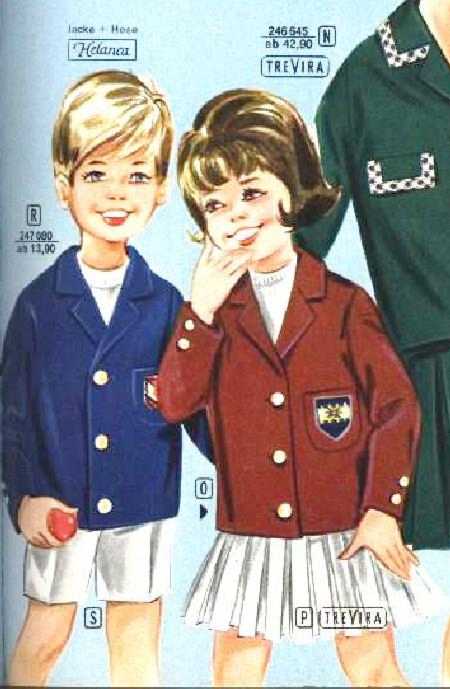
Figure 1.--This 1965 catalog showed a younger boy and girl in traditional blazers. Note the buttons are on different sides for the girl and boy models.


Figure 1.--This 1965 catalog showed a younger boy and girl in traditional blazers. Note the buttons are on different sides for the girl and boy models. |
We note one advertizement for a a very British-looking younger boy's blazer with traditional styling. we are not sure just when blazers became popular in Germany. They were not commonly worn before World War II. Note that the only difference between the boys' and girls' blazers is the side the buttons are on and the design of the badge.
The company advertizing the blazer is Otto-versandhaus. We do not know just when the company was established or by who. We do not know of an actual store. This may b a purely catalog company. The company is apparently still in business and we note a website just for Otto. We had thought that Otto was a first name, but it may wll be the founder's last name. The Otto website includes this refereced a Micharl Otto, "Die Michael-Otto-Stiftung für Umweltschutz verfolgt als Ziel den
Schutz und den Erhalt der Lebens-grundlage Wasser."
This page of the catalog offered blazers for younger children and hite skirts and short pants.
We note one advertizement for a younger boy's blazer with traditional styling. we are not sure just when blazers became popular in Germany. They were not commonly worn before World War II. This 1965 catalog showed a younger boy and girl in traditional blazers. Note the buttons are on different sides for the girl and boy models. They are shown as being worn with crew-neck sweaters or shirts. The blazer appear to have plain brass buttons. The ad copy reads, "Auch der ganz kleine Bub siche in der Clubjacke gold geus. Ideal des Material -- 100% HELANCA-Wirkware. Schreil gewaschen, im Nu Lockes phpo Hugeln wiederwse reu. ??? " This translates as, "But as well the quite little kid in a blazer with decorative gilded buttons. Ideal item. 100 percent Helanca cloth. Quickly washed, dried, whithout ironing and again as new . Guaranteed to wear well. Garment with lapel at the collar. Is closed by three gilded buttons. Chest pocket with badge. Long sleeves with decorated gilded buttons. Sizes: 86 92 98 104 110 116 centimeters." These sizes correspond to the height of the child and not the garment, 86 cm = 2 yrs, 92 cm = 3 yrs ...116 cm = 6yrs.
The illustration show the boy wearing white short pants with his blue blazer. The ad copy reads, " ???" This translates as "Short pant with suspenders for quite little boy in 100 percent Helanca cloth. Easy to keep well. Perfect item. Adjustement suspenders with the help of buttoning on the front. Elasticated waist. Pocket on the side
Crease well done at the legs. In white. Sizes 86 cm to 116 cm." This means 2-6 years. The creases fashion at the legs were almost compulsory in this time. This way to adjust the suspenders were common. This allowed to adjust the pants as the boy grew and thuis the shorts could be worn longer. They had two buttonholes at each suspender. The waist was slighty elasticated at the back but not at the front.
Navigate the Boys' Historical Clothing catalog/magazine pages:
[Return to the Main German mail order 1960s page]
[Main photo/publishing page]
[Store catalogs]
[Fashion magazines]
Navigate the Boys' Historical Clothing Web Site:
[Introduction]
[Activities]
[Biographies]
[Chronology]
[Clothing styles]
[Countries]
[Topics]
[Bibliographies]
[Contributions]
[FAQs]
[Glossaries]
[Satellite sites]
[Tools]
[Boys' Clothing Home]
Navigate the Boys' Historical Clothing Web Site:
[Sailor suits]
[Blazer]
[Suspender shorts]
[Sailor hats]
[Buster Brown suits]
[Eton suits]
[Rompers]
[Tunics]
[Smocks]
[Pinafores]
